Cats, with their enigmatic charm and graceful movements, have fascinated humans for centuries. One of the most intriguing aspects of their behavior is how they groom themselves. This isn’t just about keeping clean; it’s also about expressing their emotions. Just like humans might change their hairstyle or outfit based on how they’re feeling, cats adjust their grooming habits to reflect their mood. Understanding this feline behavior can deepen the bond between cats and their human companions.
The Basics of Cat Grooming
Grooming is an essential part of a cat’s daily routine. On average, a cat can spend between 30% to 50% of its waking hours grooming itself. This might seem excessive, but for cats, it’s as natural as breathing. Grooming helps to keep their fur clean and free of parasites. If you’ve ever watched a cat meticulously lick its paw and then rub it over its face, you’ve witnessed their dedication to staying tidy. This ritualistic behavior also helps to regulate a cat’s body temperature and stimulates circulation.
Grooming as a Stress Reliever
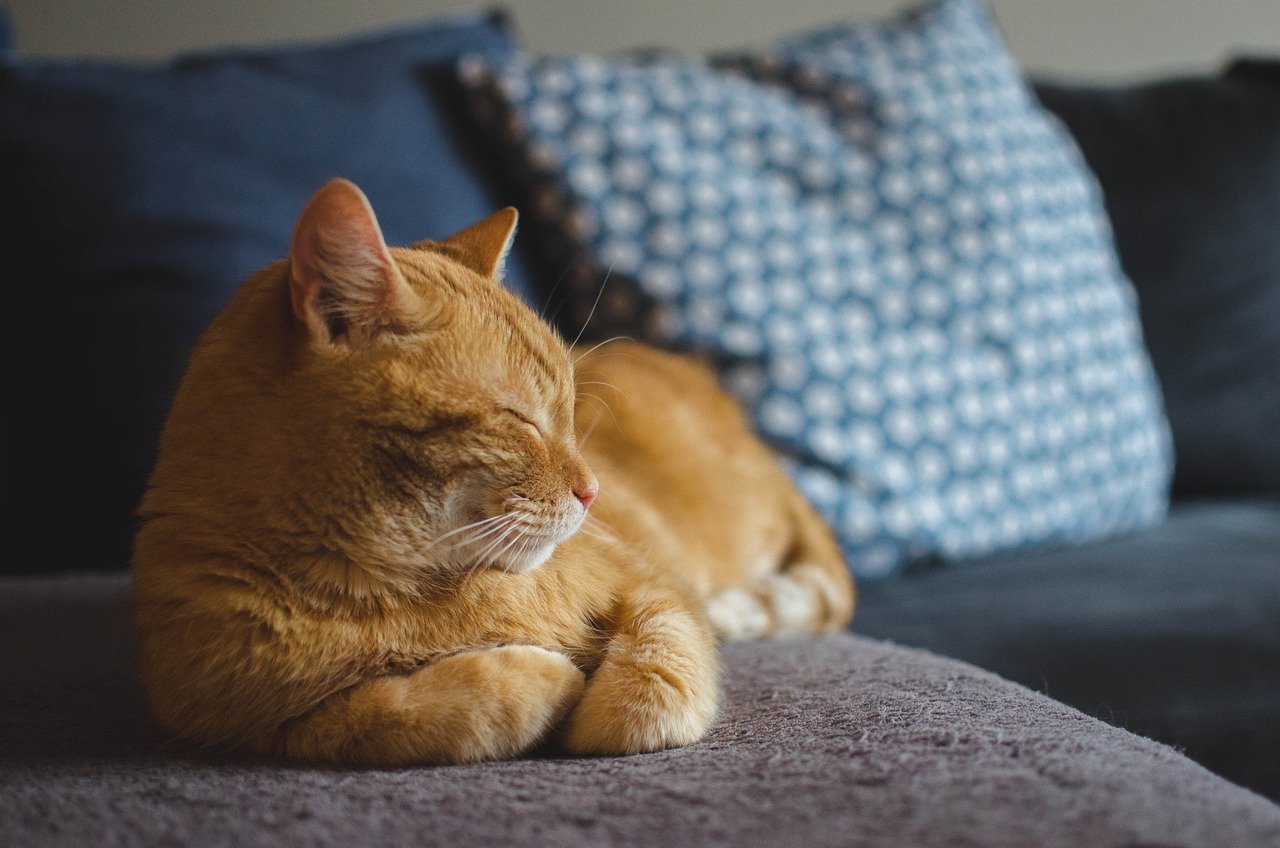
Cats often use grooming as a way to calm themselves in stressful situations. When a cat feels threatened or anxious, it might suddenly start grooming itself to soothe its nerves. This is comparable to a person biting their nails when nervous. By focusing on grooming, a cat can momentarily distract itself from whatever is causing distress. It’s a clever coping mechanism, allowing the cat to regain a sense of control and composure.
Happy Cats and Their Grooming Patterns
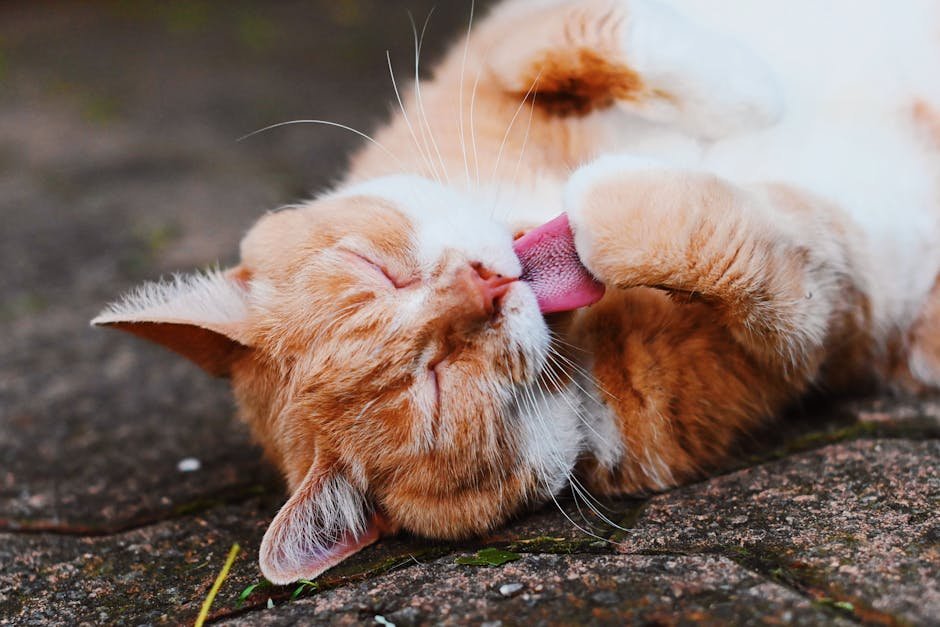
A content cat will often have a consistent grooming routine. When a cat feels secure and happy in its environment, it will engage in grooming activities regularly and with enthusiasm. You might notice that a happy cat’s fur looks shinier and more vibrant. This is because grooming stimulates the production of natural oils, which enhances the coat’s sheen and softness. Observing a cat’s grooming behavior can be a good indicator of its overall mood and well-being.
Changes in Grooming When Feeling Unwell
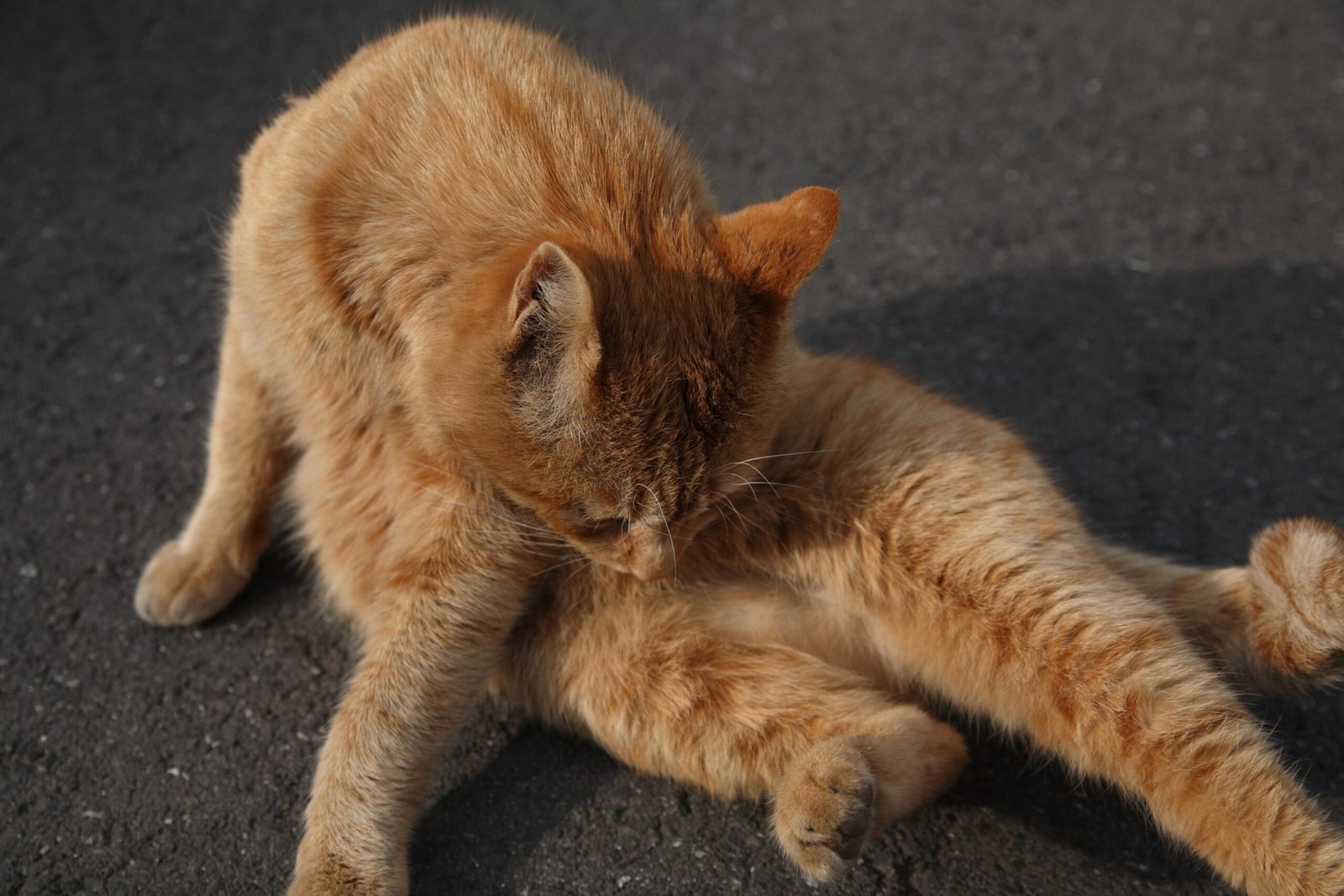
A sudden change in grooming habits can be a sign of illness. Cats that stop grooming altogether might be experiencing health issues. Conversely, excessive grooming can also indicate discomfort or pain. For instance, a cat might over-groom a specific area if it’s injured or irritated. If you notice such changes, it’s wise to consult a veterinarian. A cat’s grooming habits are a window into its health, and any drastic deviations from the norm should be taken seriously.
Grooming and Social Dynamics
Cats also use grooming as a social tool. In multi-cat households, you might observe cats grooming each other, a behavior known as allogrooming. This is more than just cleaning; it’s a bonding activity. Cats groom each other to show affection and to reinforce social hierarchies. If a cat is grooming another, it’s a sign of trust and camaraderie. Understanding these dynamics can offer insights into the relationships between cats in a household.
Grooming Habits in Different Breeds
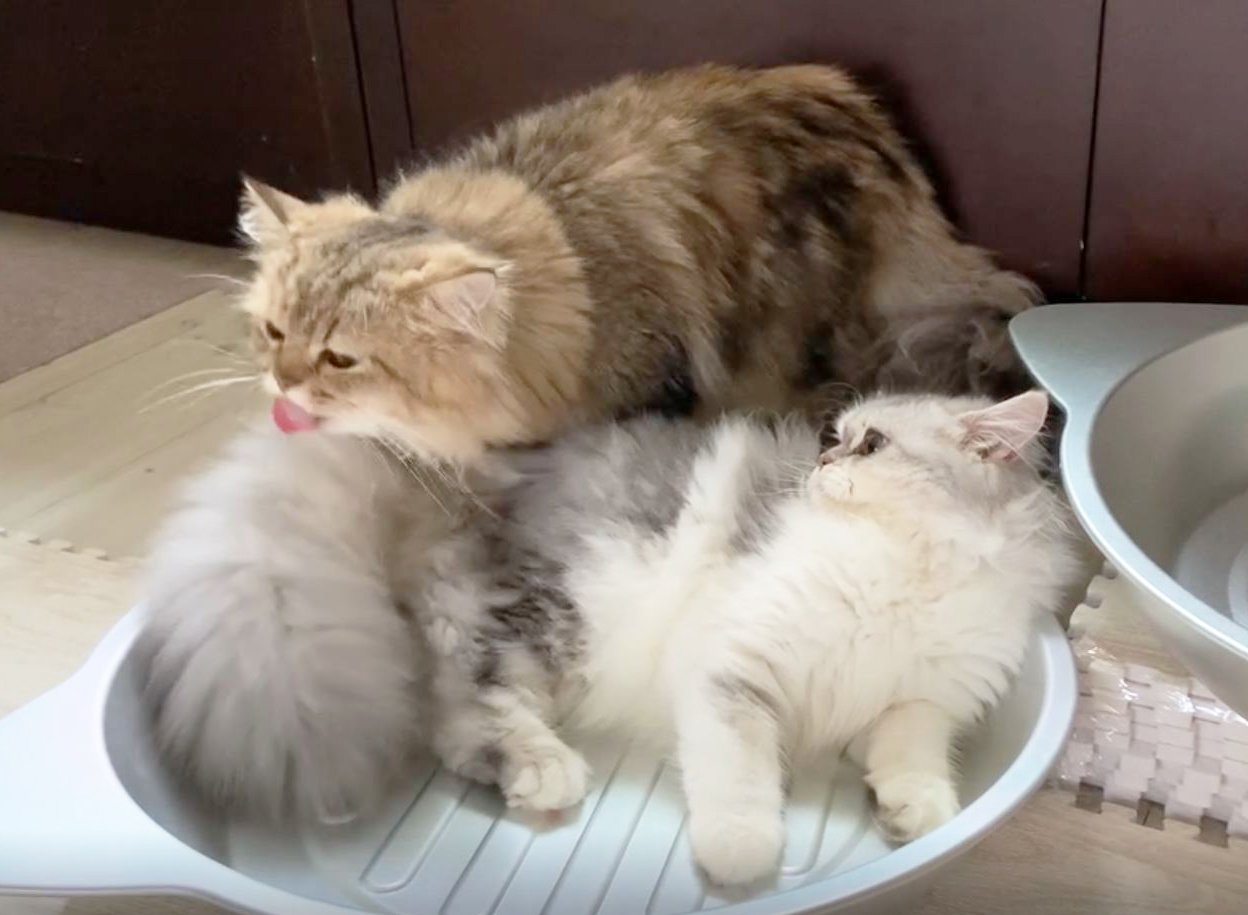
Different cat breeds have unique grooming habits. For instance, long-haired breeds like Persians require more grooming, both self-initiated and from their human caregivers. In contrast, short-haired breeds might spend less time on grooming, but this doesn’t mean it’s any less important to them. Understanding the grooming needs of different breeds can help owners provide better care and ensure their cats remain comfortable and happy.
The Role of Environment in Grooming
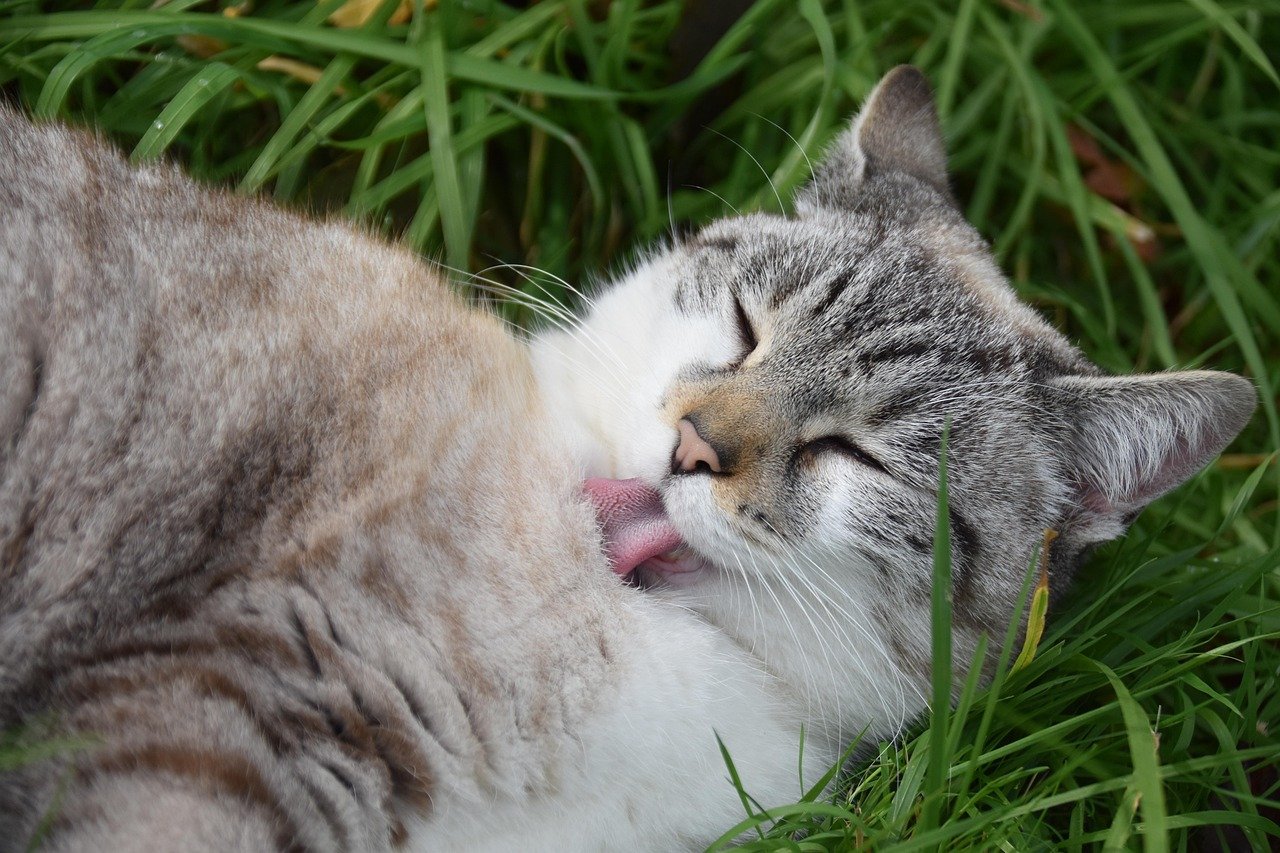
The environment plays a crucial role in a cat’s grooming habits. Cats thrive in stable, calm environments. A noisy or chaotic setting can lead to increased grooming as a stress response. On the other hand, a peaceful environment encourages regular grooming routines. Providing a safe and serene space can promote healthier grooming behaviors and enhance a cat’s overall quality of life.
Kitten Grooming: Learning the Ropes
Kittens learn to groom themselves from a young age. Initially, they rely on their mother for grooming, but as they grow, they start mimicking her actions. Watching a kitten awkwardly attempt to clean itself can be both amusing and endearing. This learning phase is crucial, as it sets the foundation for their grooming habits as adults. Encouraging proper grooming in kittens can lead to healthier, happier cats in the long run.
Grooming and Aging Cats
As cats age, their grooming habits might change. Older cats might find it challenging to groom themselves as effectively due to arthritis or other age-related issues. As a result, they might need a little extra help from their human companions. Regular brushing and gentle cleaning can support older cats in maintaining their grooming standards and overall health.
Grooming Tools and Their Importance
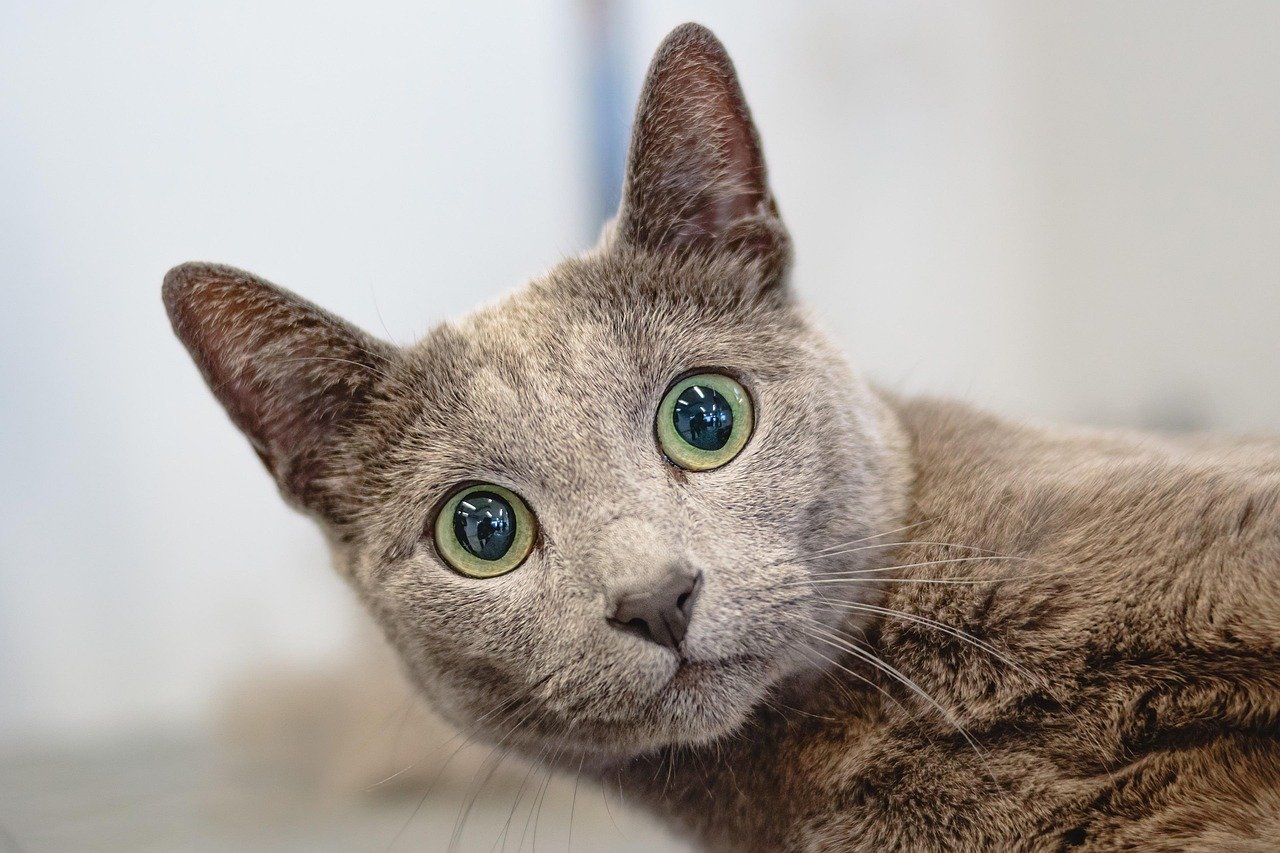
Having the right grooming tools can make a world of difference for both the cat and the owner. Brushes, combs, and grooming gloves are essential for maintaining a cat’s coat. These tools can help reduce shedding, prevent mats, and distribute natural oils. Moreover, regular grooming sessions can serve as bonding time between the cat and its owner, strengthening their relationship.
Recognizing Overgrooming: What It Means
Overgrooming is a sign that something might be amiss. Cats that groom excessively might end up with bald patches or irritated skin. This behavior can be triggered by stress, allergies, or underlying medical conditions. Recognizing and addressing the cause of overgrooming is crucial. It’s essential to consult with a vet to ensure the cat’s health and well-being if overgrooming becomes a concern.
The Connection Between Grooming and Diet
A cat’s diet can significantly impact its grooming habits. Cats on a balanced diet tend to have healthier skin and coats, which can influence their grooming behavior. Nutrient-rich foods, especially those high in omega-3 and omega-6 fatty acids, can enhance the quality of a cat’s fur. Ensuring a cat has a nutritious diet can lead to a more effective and satisfying grooming routine.
Grooming and Seasonal Changes
Seasonal changes can influence a cat’s grooming habits. During shedding seasons, such as spring and fall, cats might up their grooming game to manage the extra fur. Owners might notice more hairballs during these times. Being aware of these seasonal shifts can help owners provide the necessary care and support to their feline friends.
Grooming as a Sign of Territorial Behavior
Cats can use grooming as a way to mark their territory. By spreading their scent through grooming, they establish their presence in a particular area. This behavior can be observed in multi-cat households where each cat might have its designated grooming spot. Understanding this territorial aspect of grooming can offer insights into a cat’s behavior and preferences.
The Impact of Human Interaction on Grooming
Human interaction can influence a cat’s grooming habits. Cats that receive ample affection and attention might groom themselves more frequently as a sign of contentment. Conversely, cats that feel neglected might exhibit changes in grooming behavior. Regular interaction and bonding can promote healthy grooming routines and enhance the cat-owner relationship.
Grooming as a Reflection of Mood Swings
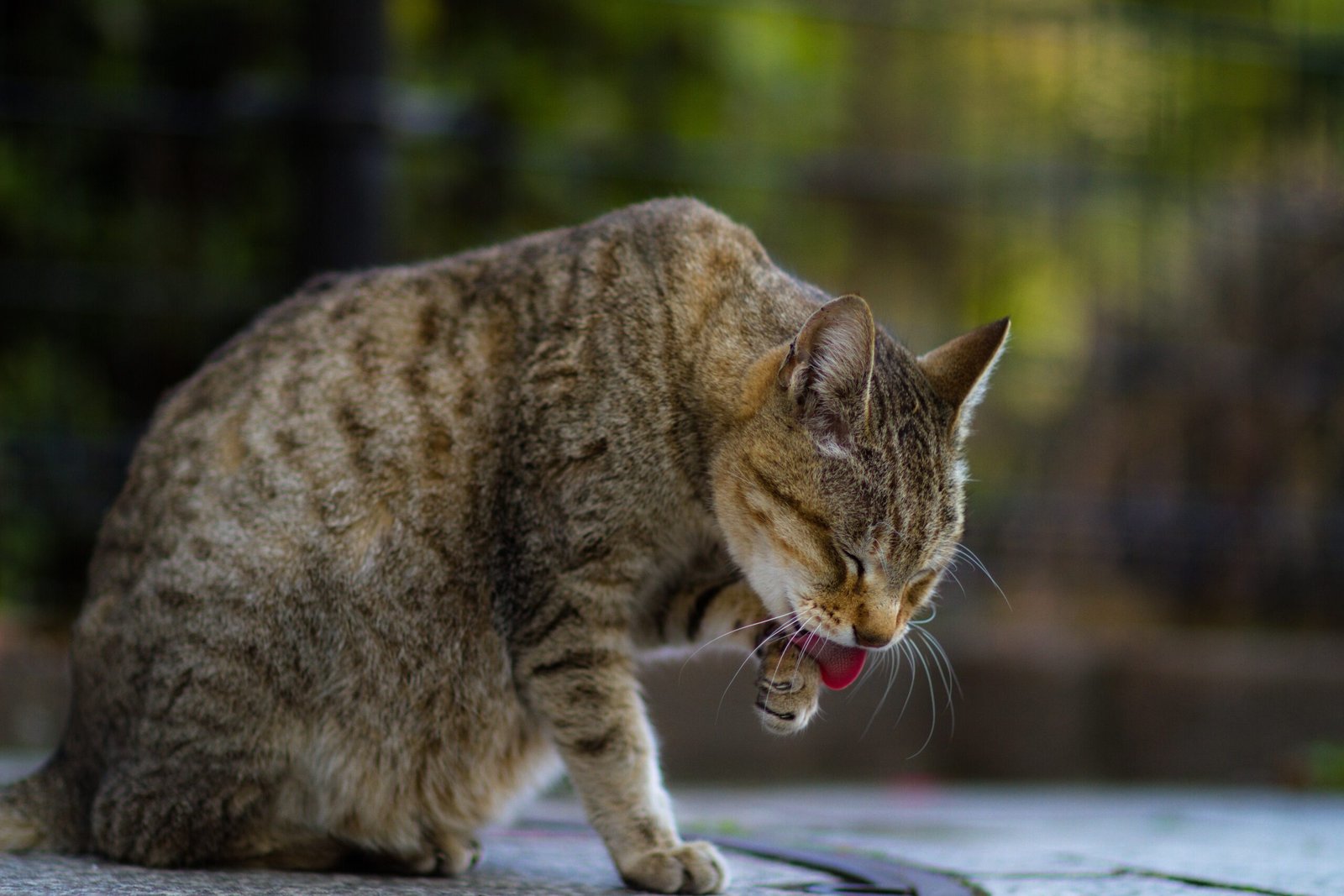
Just as humans experience mood swings, cats do too, and these can be reflected in their grooming habits. A sudden increase or decrease in grooming might indicate a mood shift. Being attuned to these changes can help owners better understand their cat’s emotional state and provide the necessary support.
Understanding the Language of Purring and Grooming
Purring often accompanies grooming and can be an indicator of a cat’s mood. A cat that purrs while grooming is generally content and relaxed. However, it’s essential to note that cats can also purr when they’re in pain or anxious. Observing the context in which a cat grooms and purrs can offer valuable insights into its emotional and physical state.
The Role of Routine in Grooming
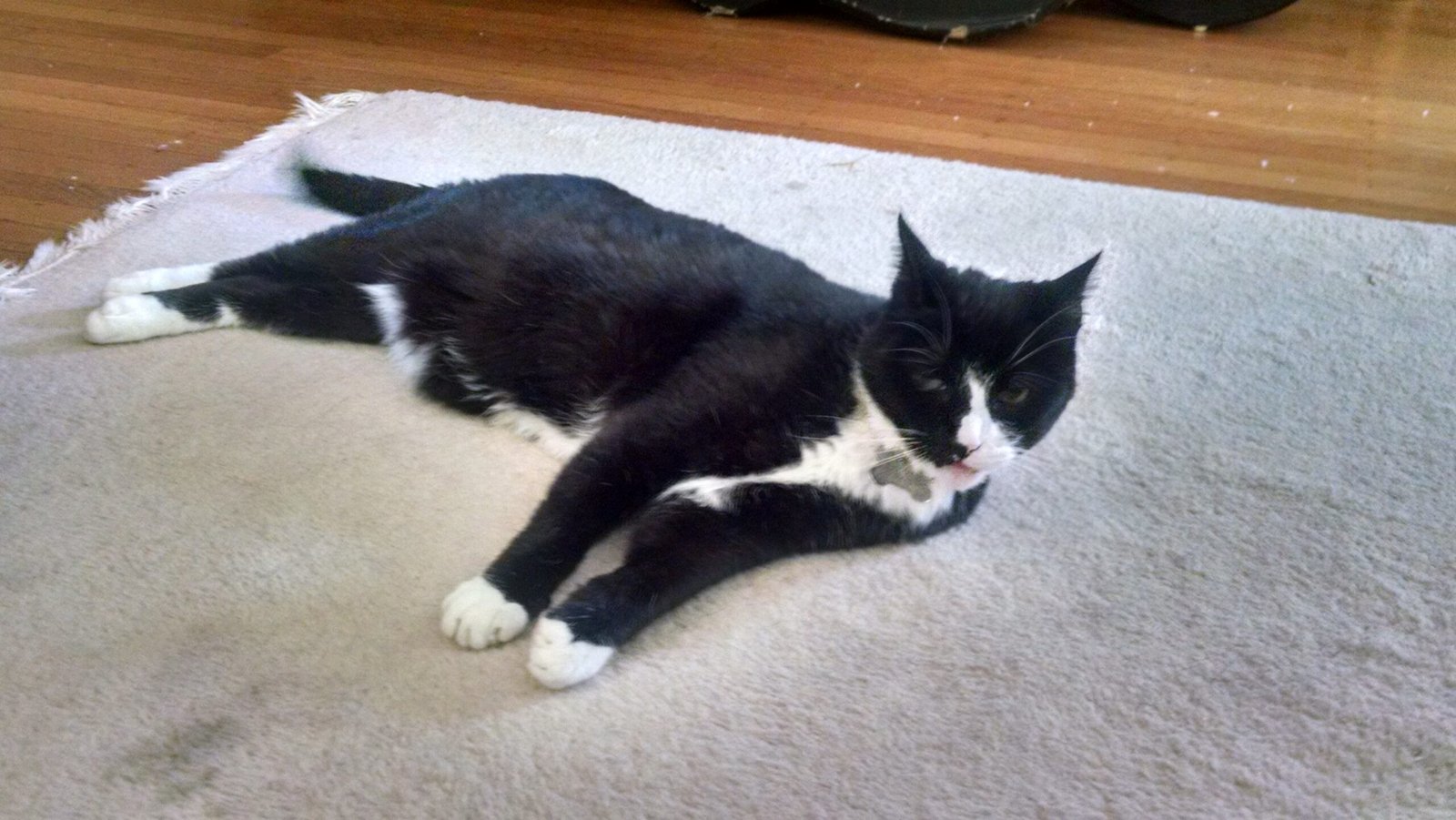
Routine is crucial for cats, and grooming is no exception. Cats thrive on consistency, and a regular grooming schedule can contribute to their overall well-being. Owners can support this by providing a structured environment and regular grooming sessions. Consistency helps cats feel secure and can lead to healthier grooming habits.
Grooming and the Bond Between Cats and Humans
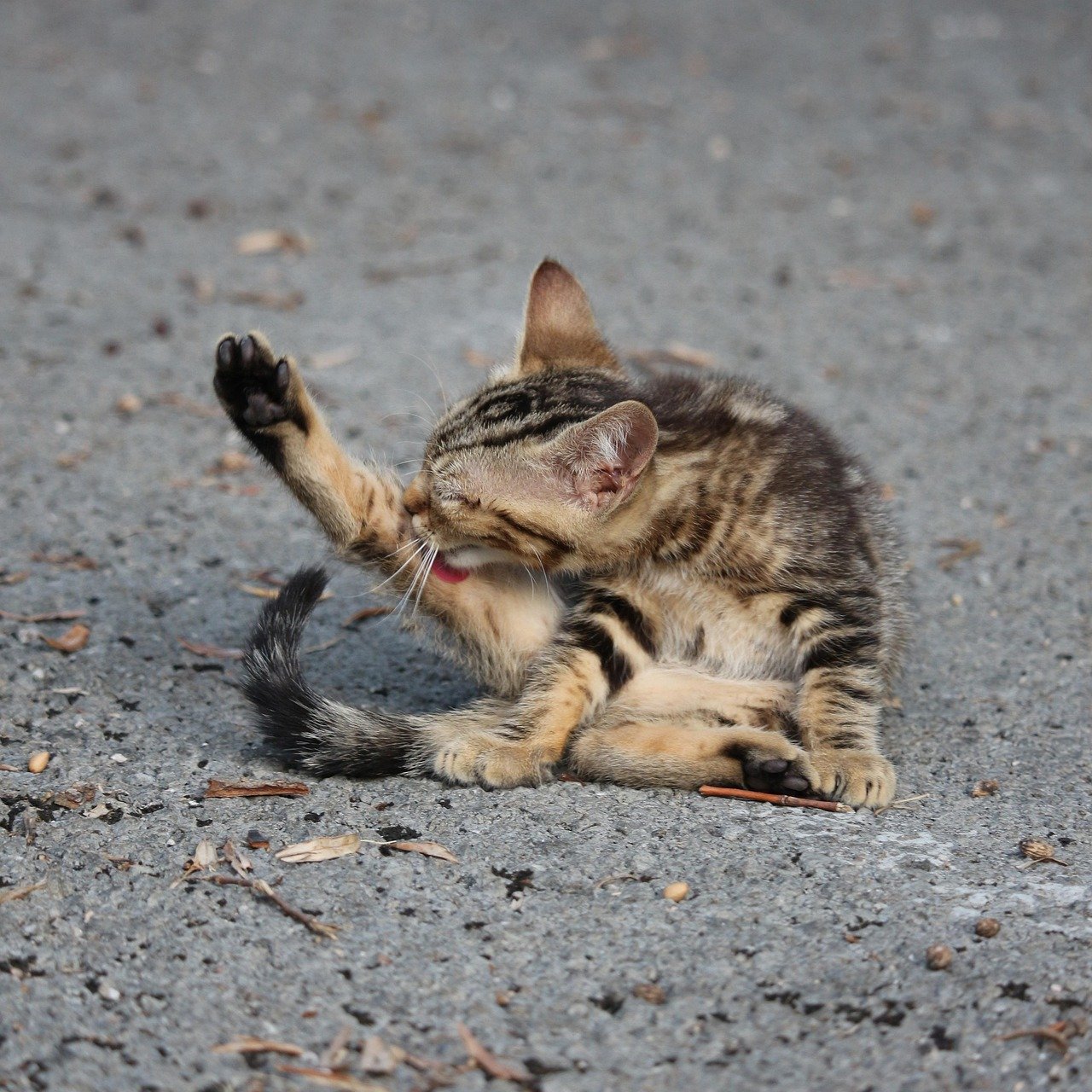
Grooming is not just about cleanliness; it’s also about connection. When a cat allows its owner to groom it, it’s a sign of trust and affection. This interaction can strengthen the bond between the cat and its human companion. By understanding and respecting a cat’s grooming habits, owners can foster a deeper and more meaningful relationship with their feline friends.
Understanding a cat’s grooming habits offers a unique glimpse into its world. By observing how cats groom themselves, we can learn about their emotions, health, and needs. This understanding not only enriches the lives of our feline companions but also deepens the bond we share with them.
Hi, I’m Bola, a passionate writer and creative strategist with a knack for crafting compelling content that educates, inspires, and connects. Over the years, I’ve honed my skills across various writing fields, including content creation, copywriting, online course development, and video scriptwriting.
When I’m not at my desk, you’ll find me exploring new ideas, reading books, or brainstorming creative ways to solve challenges. I believe that words have the power to transform, and I’m here to help you leverage that power for success.
Thanks for stopping by, Keep coming to this website to checkout new articles form me. You’d always love it!






